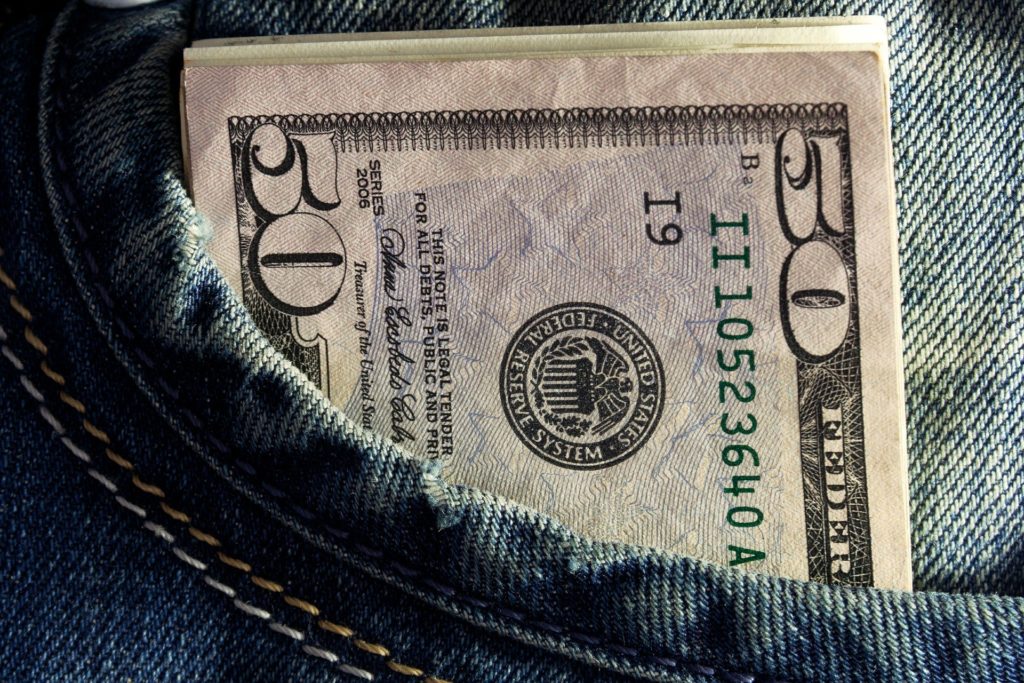What it means to pay yourself first.
Saving is to pay yourself.
Paying yourself builds wealth to fall back on if and when you need it.
Building wealth is essential to living and affording the life you want both now and also later in life when you no longer want (or are able) to work to pay for it.
Paying yourself is to create freedom.

With this improved definition of savings, we place paying ourselves ahead of spending. Savings is no longer to be funded with leftovers (if any) resulting from budgeting. Paying yourself is now the first and top priority.
There are two major benefits to paying yourself first:
- Benefit #1: Wealth accumulation
- Benefit #2: Lower taxes
The faster you build wealth, the sooner and more freedom you create for yourself. To accumulate wealth as quickly and cheaply as possible, use tax-advantaged retirement savings accounts. These are not simply retirement accounts – these are positively your most efficient way to grow wealth.
Do not avoid or delay participation here in exchange for other life priorities. Wealth accumulation must start as soon as possible.
When paying yourself using tax-advantaged savings such as an employer-sponsored 401(k) plan, you are choosing to pay yourself ahead of everyone, including the government. Contributions to the plan are removed from your paycheck before tax, thereby reducing the amount of payroll remaining from which taxes are calculated. This tax efficiency is a discount to the price of your contributions – the deposits into your retirement savings account are larger than what it costs you in reduction to your paycheck.
Here is an example: if federal and state taxes are withheld from your paycheck at a rate of 20%, then a $1,000 contribution to your 401(k) plan will reduce your take-home pay by only $800. Now that is a good investment.

How to pay yourself first and well.
In order to best pay yourself, remove savings from your paycheck or bank account immediately and before taxes (or after taxes in Roth accounts) whenever possible. There are several ways to do this and generally in this order:
Tax-advantaged savings accounts:
- Employer-sponsored plan
This is a retirement savings account where contributions are funded with pre-tax deductions from your paycheck. If available, this should be your first choice for savings. - Individual Retirement Account (“IRA”)
If an employer-sponsored plan is not available, you can instead contribute to a tax-deductible IRA. Have these amounts directly deposited to your IRA from your bank account on a regular basis. Go to vanguard.com to set-up your IRA today. - Self-employed Pension IRA (“SEP-IRA”)
In addition to the IRA, self-employed individuals may also contribute to a tax-deductible SEP-IRA. Go to vanguard.com to set-up your SEP-IRA. - Health Savings Account (“HSA”)
If you are enrolled in a qualified high-deductible health plan, you can contribute to this tax-free account. Contribute to this regularly directly from your paycheck if available at work, otherwise directly from your bank account.
After-tax savings:
- Taxable savings account
This option should be used once you have satisfied the tax-advantaged savings options mentioned above.
To summarize all of this, paying yourself well is best accomplished using tax-advantaged savings accounts to the greatest extent available to you before saving in taxable accounts. Navigating the variety and order of options can be confusing. For our purposes here, we will focus on the 401(k) plan since it is the most prevalent.

How much to pay yourself first.
The short answer on how much to pay yourself is really “as much as reasonably possible”. Keep in mind that the more you save now, the faster you will accumulate wealth and provide yourself with additional freedom and options sooner.
Your target wealth number is specific to your circumstances and lifestyle, but a general guideline is to grow your wealth to at least 25 times your annual costs (including both living costs and discretionary spending). For most Americans, this amounts to anywhere between $1.0-2.0 million to retire comfortably, possibly more if living in high-cost areas or managing other unusually high expenses. According to Schwab, someone in their 20’s may need to save 10-15% of their annual salary to achieve their wealth target by the traditional retirement age of about 62. Someone in their 40’s may need to save 35%. And bump these rates up if you plan to retire early.
401(k) contributions
Savings should start with your employer-sponsored 401(k) plan. How much should you be saving in your plan? As much as you can. More specifically, here are some recommendations around this:
- $19,500 is your ultimate goal and the maximum annual contribution currently allowed for an employee. An additional $6,500 is allowed for those age 50 and up. Note these amounts do not include employer match.
- 20% of your salary is a decent goal, although more if possible is all the better.
- 10% is the average amount that people put away. Understanding that the average person is not saving enough to live comfortably, we should be striving to save more than this.
- 6% is the minimum contribution you should make assuming this is the level required to maximize your employer match.
If you are making $75,000 or more, you should generally be able to contribute the maximum to your 401(k) account. Exceptions to this can include those owing large amounts of debt with burdensomely high monthly payments or living in high-cost areas such as San Francisco or New York City.
Again, these are suggestions. Keep in mind that the real goal for anyone is to put away as much as reasonably possible in order to best accumulate wealth and lower taxes. Your goal should be to reach maximum contribution limits as soon as you can. Use pay raises to your advantage by increasing contributions as much as possible with each bump in salary.
After the 401(k) maximum
Once you have reached the $19,500 (or $26,000) maximum annual contribution to your 401(k), you have a couple more tax-advantaged savings vehicles available to you:
- Next: Individual Retirement Account – Up to $6,000 ($7,000 age 50 and up) annually. This includes Roth IRAs.
- Then: Health Savings Account – Up to $3,550 ($7,100 for family) annually. More on this here:
At this point, any additional savings can go into a taxable account.

Always pay yourself first and well.
You have worked hard for your money and deserve to keep some before giving it to anyone else. To pay yourself first is to finally get ahead.
For more information and help to pay yourself first, sign-up at buckthebudget.com.
